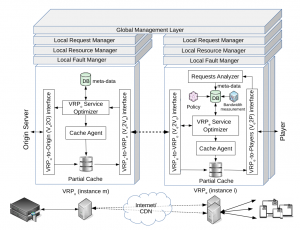Paper accepted – HxL3: Optimized Delivery Architecture for HTTP Low-Latency Live Streaming
IEEE Transactions on Multimedia
Farzad Tashtarian (Alpen-Adria-Universität Klagenfurt), Abdelhak Bentaleb (National University of Singapore), Alireza Erfanian (Alpen-Adria-Universität Klagenfurt), Hermann Hellwagner (Alpen-Adria-Universität Klagenfurt), Christian Timmerer (Alpen-Adria-Universität Klagenfurt), and Roger Zimmermann (National University of Singapore).
 Abstract: While most of the HTTP adaptive streaming (HAS) traffic continues to be video-on-demand (VoD), more users have started generating and delivering live streams with high quality through popular online streaming platforms. Typically, the video contents are generated by streamers and being watched by large audiences which are geographically distributed far away from the streamers’ locations.
Abstract: While most of the HTTP adaptive streaming (HAS) traffic continues to be video-on-demand (VoD), more users have started generating and delivering live streams with high quality through popular online streaming platforms. Typically, the video contents are generated by streamers and being watched by large audiences which are geographically distributed far away from the streamers’ locations.
The locations of streamers and audiences create a significant challenge in delivering HAS-based live streams with low latency and high quality. Any problem in the delivery paths will result in a reduced viewer experience. In this paper, we propose HxL3, a novel architecture for low-latency live streaming. HxL3 is agnostic to the protocol and codecs that can work equally with existing HAS-based approaches. By holding the minimum number of live media segments through efficient caching and prefetching policies at the edge, improved transmissions, as well as transcoding capabilities, HxL3 is able to achieve high viewer experiences across the Internet by alleviating rebuffering and substantially reducing initial startup delay and live stream latency. HxL3 can be easily deployed and used. Its performance has been evaluated using real live stream sources and entities that are distributed worldwide. Experimental results show the superiority of the proposed architecture and give good insights into how low latency live streaming is working.
Index Terms—Live streaming, HAS, DASH, HLS, CMAF, edge computing, low latency, caching, prefetching, transcoding.

